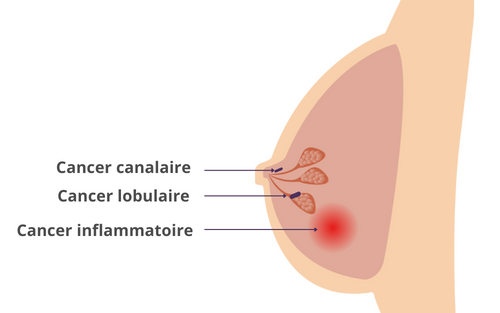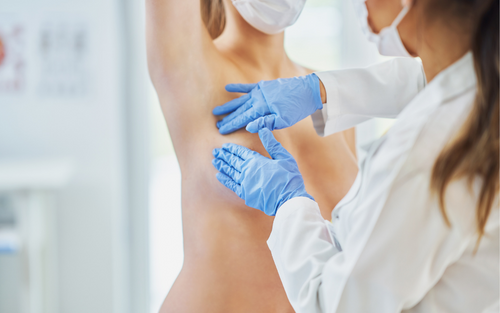Breast cancer represents 33% of female cancer cases.
It is the leading cause of death in women with more than 12 146 deaths per year in France. However, the new early detection techniques make it possible to facilitate care and thus reduce the mortality rate.
By definition
What is Cancer?
What is breast cancer?
The female breast is an organ which, by nature, has the function of producing milk. It is mainly composed of fatty, glandular and connective tissues. The breast is made up of lobes (divided into lobules) and milk ducts.
According to Arch Foundation, in general, there are 3 forms of breast cancer:
- Lobular cancer: it represents approximately 10% breast cancers and develops in the cells of the lobules.
- Ductal cancer: this is the most common form of breast cancer with 80 at 90% cases affected by this cancer. It develops in the milk ducts of the breast.
- Inflammatory cancer: this is an uncommon form of breast cancer. Some tumors have an inflammatory aspect and are therefore more difficult to diagnose because they are difficult to palpate.
Of course, the cases are not limited to only 3 specific forms. There are other rarer forms such as medullary, papillary or tubular cancers.
The different risk factors
There are several types of risk factors associated with breast cancer. These examples may increase the risk of breast cancer but are in no way specific to it.
The main known risk factors are:
- age: 80% breast cancers develop after 50 years. Indeed, the average age of diagnosed women is 63 years. Nevertheless, there are always different cases: about 10% of cases of breast cancer occur in women under the age of 35.
- heredity: the transmission of certain identified mutated genes would strongly promote the appearance of breast cancer. The most common are the BRCA1 and BRCA2 genes. They are responsible for more than 80% hereditary forms of cancer. The family history of cancer should be discussed with the doctor and the outcome of the consultation may lead to genetic testing.
Did you know ? Angelina Jolie performed a preventive mastectomy (removal of both breasts) due to a significant hereditary risk of breast cancer. The mother and grandmother of Angelina Jolie having had breast cancer, a genetic test was offered to her.
- personal history: after breast cancer, the patient is 4 to 5 times more likely to develop it in the other breast. On average, this concerns 15% of women treated for breast cancer. In a context of family cancers, other types of cancer (ovary, uterus, colon, etc.) can also increase the risk of developing breast cancer.
At the same time, there are also supposed risk factors such as hormonal factors, menopause, precocious puberty, age of first pregnancy or duration of breastfeeding.
There are also preventable risk factors that can be controlled to reduce your risk of breast cancer. For example: a diet that is too sweet or too fatty, consumption of tobacco and alcohol, no regular physical activity... Discover then 5 lifestyle habits that allow you to prevent the development of breast cancer !


Screening and prevention methods
Examination by a gynecologist
Chest self-examination
Also called self-examination of the breasts, this practice helps to know your body perfectly to quickly detect any harmless change. It is completely normal for the appearance of your breasts to change over the years. However, it is necessary to remain attentive to modifications which would be unusual. It is advisable to do the self-examination from the age of 25 once a month at the same period of the menstrual cycle (generally after the days of the rules, when the tissues are more flexible). For menopausal women, it is good to choose the 1st day of the month as the time marker.
To facilitate the gesture, there is an innovative tool designed in the laboratory and accessible to all: the breast self-examination aid pad. This device makes it possible to carry out early detection of breast cancer or another anomaly in an autonomous and comfortable manner.
Let's raise awareness for the cause 🎗️
Each year, the month of October turns pink and various organizations are committed to raising awareness for breast cancer screening. It is essential to prevent the disease. To detect it early is to considerably increase its chances of recovery and survival. As proof, according to Arch Foundation, 87% of patients are alive 5 years after diagnosis. All year round, let's be pink!


